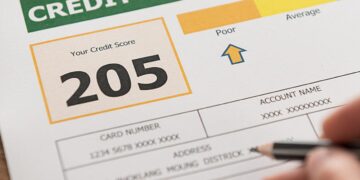Personal loans are extremely flexible financial products, suitable for so many fiscal demands and times you may just need a little additional help or things are a bit tight. A personal loan is commonplace in the lending market and easy to access with direct online lenders. The flexibility it affords means that borrowers can use it for almost whatever they need, with lending remits usually ranging from £1500 and £25000.
It’s a bit vague to say that once accepted, you can use a personal loan on anything you want. Our guide is here to talk you through the parameters for spending a personal loan, including inappropriate uses.
Financial Emergencies

Sometimes you may just need a small cash injection or little financial boost to cope with an unexpected bill or emergency that has cropped up. It could be anything from a leaky roof, a car breakdown and repairs or a family member has been robbed abroad and needs quick money to return home safely. In these events, many people might be tempted to turn to short term credit because they market themselves as quick-access or same-day funds. In reality, a personal loan may be even more suitable.
A personal loan is available from sums as low as £1000, but this could differ depending on the lender. This could be an ideal figure for that small cash injection that gets you through to payday without over committing or over-borrowing.
Over borrowing is a term that is typically used for indulgent overspending or harmful consumer behavior, but it can be applied to loans as well. It is the instance in which an individual borrows more than they really require just for frivolous spending.
Taking out a personal loan for an emergency also affords you the flexibility with how much you need to borrow, unlike a payday loan or short term credit, which is capped at a maximum of £2,500. Lenders, such as personalloansnow.co.uk help consumers avoid this kind of dangerous and high cost, unsustainable source of credit altogether.
High cost, short term credit does allow consumers to pay back the money they have borrowed in under a year, by definition. Typically, a short term loan will be paid back via monthly installments and a payday loan will need to be paid in one lump sum to the creditor on the borrower’s next pay date. This can seem really appealing to consumers as it seems like a quick and clean way to manage a situation at hand, however, being in a time-sensitive situation and needing access to money as soon as possible could lead to reckless financial decisions. It is important that consumers understand all they need to about financial products before committing to them.
Personal loans can be paid out on the same day, too. This means they are just as convenient as payday loans. By definition, a payday loan has an APR of over 1000%, although regulations now limit how much a consumer will repay, this is still an expensive way to borrow a small amount of money. Although over-borrowing is not encouraged, and a personal loan may have a higher minimum lend than is actually required, it is worth working out the costs of both types of financing.
Personal loans could give you a little breathing room to manage a financial emergency and ensure that whatever has gone wrong, is rectified properly. In the long run, it could be so much more expensive to opt for quick fixes!
Home Improvements

Home improvements can be extremely costly ventures, and although they may seem like a frivolous expense, they can sometimes be mandatory. There is a lot of crossover between financial emergencies and home improvements. For example, the Home Owners Association compiled a list of typical home improvements and their subsequent price tags:
- A new roof – this could be a real home emergency following adverse weather is expected to cost anywhere from £4,500 – £12,000
- A new bathroom – this could be mandatory following a burst pipe or a severe leak and is expected to cost, on average, £6,000.
- Fixing rot and damp – this is a home improvement that varies in cost and could set homeowners back anything from £1,000 – £16,000 depending on the severity of the situation.
The cost of these home improvements highlights just how much money would have to be saved in order to pay for them without using credit. It is completely appropriate to use a personal loan in these situations. Furthermore, it is completely impossible to budget for every little thing and we all rely on credit at some point in our lives, but more poignantly, it’s even harder to get a contractor or builder to stick to a budget. Homeowners are often quoted a price for home improvements and the works go way over budget, through no fault of their own. Considering the discrepancies between the lower and higher ends of these home improvement costs, it’s no surprise that personal loans are often used for this kind of expense.
As personal loans can be paid into a recipient’s account on the same day the application is processed, allowing borrowers to start organizing necessary repairs and works without too much delay.
It should be noted that taking out a personal loan to make home improvements with the intention of flipping a property or increasing the value of it is considered an investment risk. This is because individuals will have agreed to the investment with the expectation of making a profit. If this is how a borrower intends to make money to meet repayments, it could be an extremely risky game. This is because repayments would then depend on the sale price, as well as if the property sells, the market value of the property and the stability of that market.
Furthermore, some home improvement investments are actually more expensive to install and maintain than you may initially think. For example, a house with a pool may seem extremely appealing but the work required for installation may outweigh any cost-benefit seen at the time of re-sale. The Home Owners Association calculates that a new pool will cost £35,000, but only adds an additional £2,000 to the total property value.
Debt Consolidation

Although it is possible to apply for a dedicated debt consolidation loan, more often than not, they are just standard personal loans available at a favorable rate.
Debt consolidation provides consumers with convenience; those juggling multiple debts and struggling to keep on top of organizing different repayment dates can take out a loan large enough to pay off all existing debts. This means that the money owed will still total the same amount, but it will all be in one place. This makes it easier to manage debt and could minimize the risk of defaulting or making a late payment as there is only one to worry about.
All debts will need to be paid off as soon as possible for a debt consolidation loan to be most effective. It is worth noting that there may be early repayment penalties, which can really add up, especially if there are several creditors asking for fees. Debt consolidation loans will not eradicate your debts.








